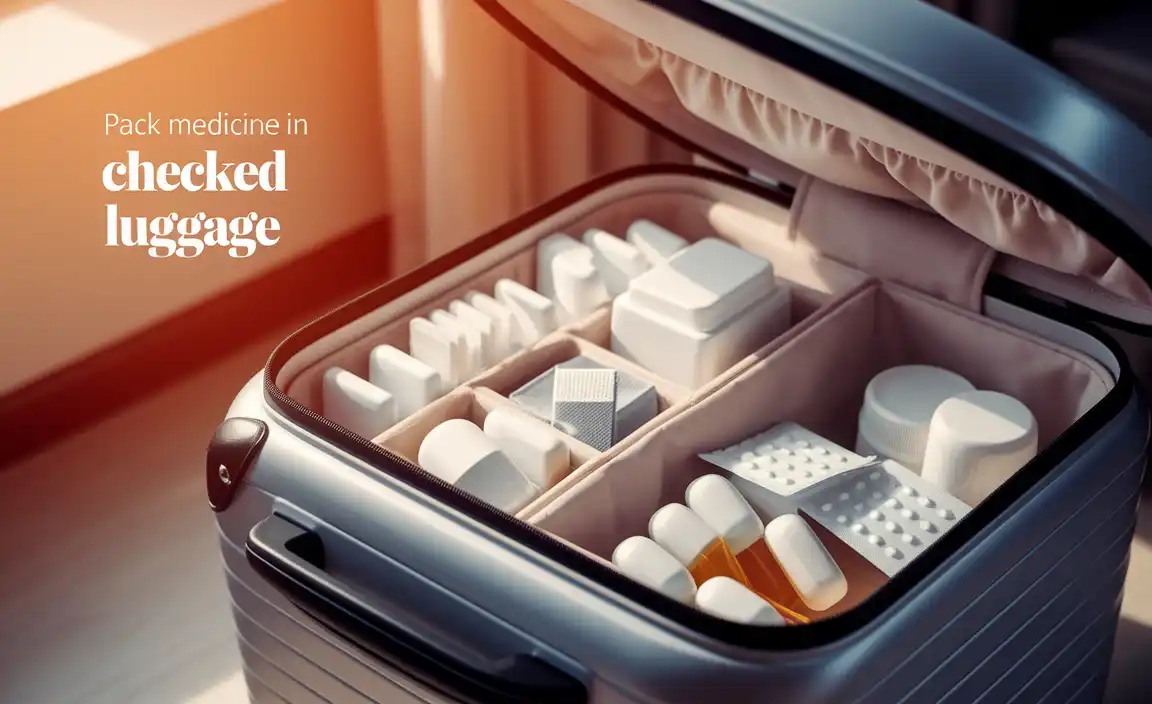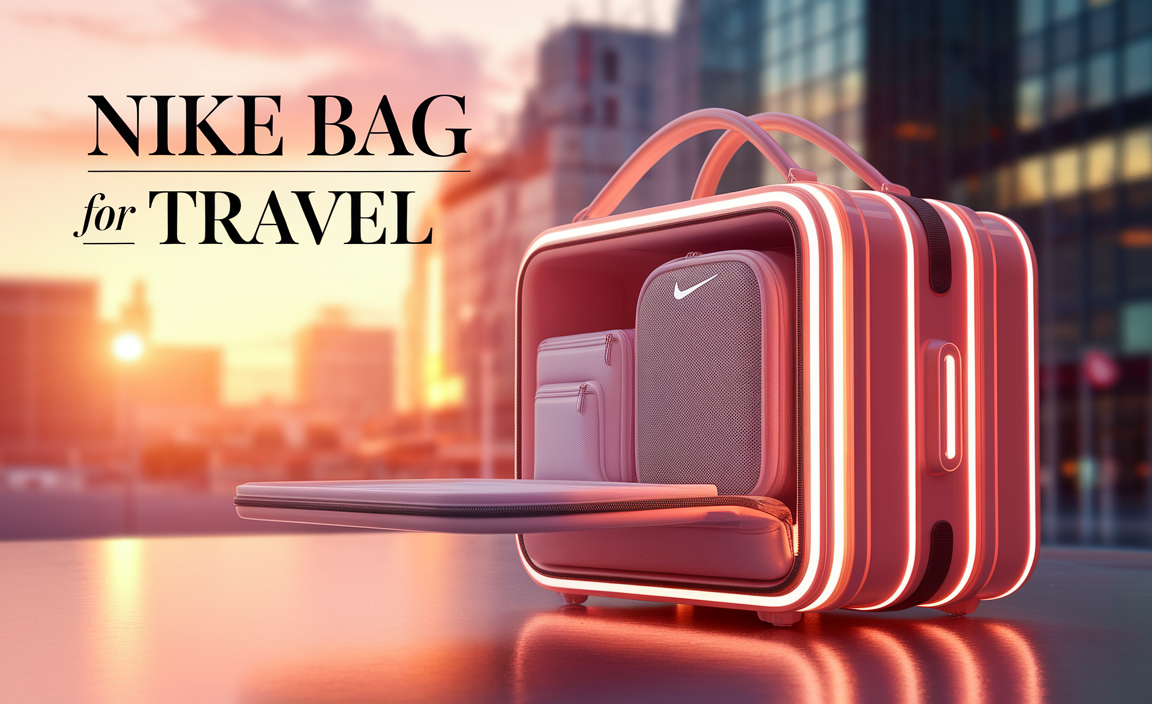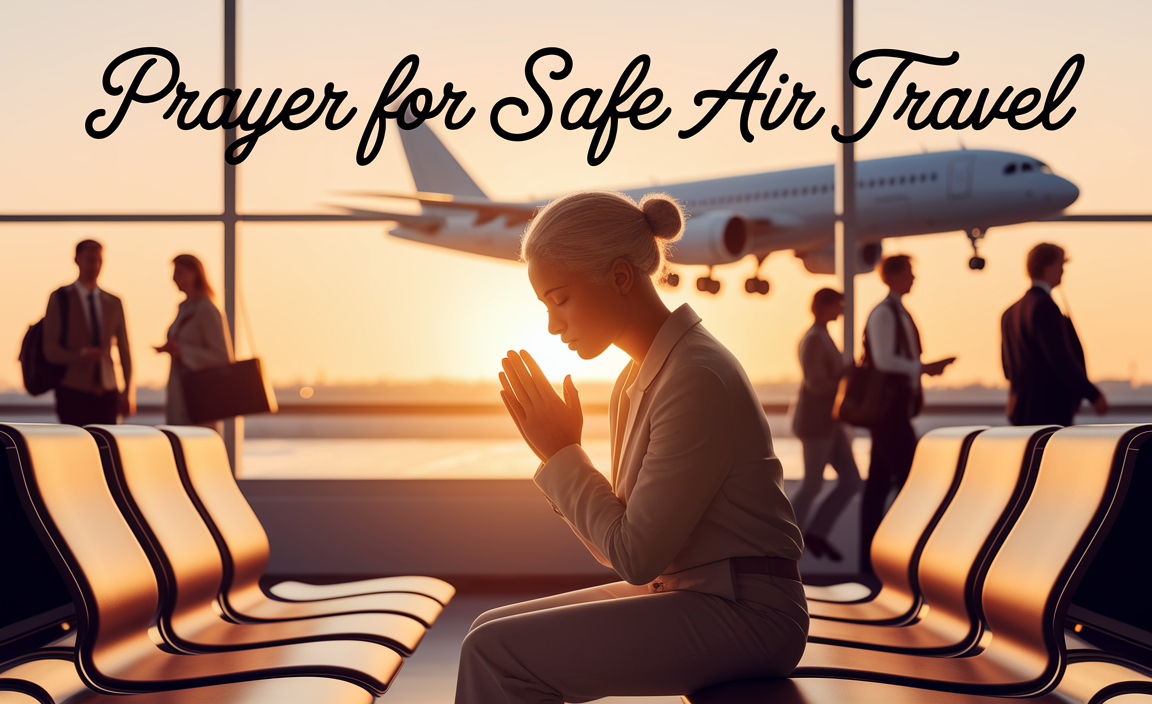How to pack medicine in checked luggage is a crucial consideration for travellers who rely on essential medications. Ensuring safe and secure medication transportation is essential to maintain health and well-being during the journey.
When it comes to packing medications in checked baggage, certain guidelines and precautions need to be followed to comply with airport regulations and safeguard the medicines’ potency and integrity. Proper packing can prevent damage and potential accidents, Whether prescription drugs, over-the-counter medications, or medical devices.
Understanding the rules and best practices for packing medicine in checked luggage will facilitate a smooth travel experience and provide peace of mind knowing that health needs are adequately addressed throughout the trip. This guide will explore the necessary steps and considerations for appropriately packing medicine in checked luggage, ensuring your medications remain safe and accessible throughout your journey.

Check Tsa Regulations Before Packing Medications
If you plan to travel with medication, it is important to check the Transportation Security Administration (TSA) regulations before packing your bags. The TSA has specific rules regarding the types of medications that can be brought on board a plane and how they should be packed.
Generally speaking, all medications are allowed in both carry-on and checked bags. However, there are a few exceptions to this rule. For example, medications that contain liquid or gel may be subject to additional screening procedures. In addition, some medications may be considered controlled substances and require additional documentation or approval from the TSA.
To ensure a hassle-free travel experience, it is recommended that you pack your medications in their original packaging, along with a copy of your prescription or a note from your doctor. This will help to expedite the screening process and prevent any delays or issues at the security checkpoint.
Overall, checking the TSA regulations before packing your medications can help alleviate stress and ensure a smooth travel experience. Remember always to pack your medications in your carry-on bag so you can always access them during your flight.
How To Pack Medicine In Checked Luggage – Tips And Precautions
Medicine is essential for many travellers, especially those with chronic or acute health conditions. However, packing medicine in checked luggage can be tricky, as there are some rules and precautions to follow to ensure the safety and effectiveness of your medications. Here are some tips on how to pack medicine in checked luggage without any hassle or risk.
1.Keep Medications In Original Packaging
One of the best ways to pack medicine in checked luggage is to keep them in original packaging, as your pharmacist or doctor provided. This will help you avoid any confusion or suspicion at the airport security, as the original packaging will have clear labels, instructions, and expiration dates for your medications. It will also help you identify your medications easily and avoid any mix-ups or mistakes.
2.Label Medications Clearly
Another tip is to label your medications clearly with your name, contact information, and dosage information. This will help you if your luggage gets lost or delayed or if you need to access your medications during an emergency. You can use a permanent marker, a sticker, or a tag to label your medications. You can also carry a copy of your prescriptions or a medication list for reference.
3.Separate Liquid Medications From Other Items
If you have any liquid medications, such as syrups, drops, or sprays, you should separate them from other items in your checked luggage. This will prevent leaks, spills, or contamination that could damage your medications or other belongings. You can use a sealable plastic bag, a ziplock bag, or a waterproof pouch to store your liquid medications. You can also wrap them in a cloth or a paper towel for extra protection.
4.Pack Medications In A Sealable Plastic Bag
Whether you have liquid or solid medications, pack them in a sealable plastic bag, such as a ziplock bag. This will keep your medications organized and secure in your checked luggage. It will also make it easier to declare them at airport security. You can use one plastic bag for all your medications or separate them by type or category.
5.Pack Medications In A Carry-On Bag, If Possible
The best way to pack medicine for a flight is to pack them in a carry-on rather than a checked bag. This will ensure that you always have access to your medications during your travel. It will also prevent any loss, theft, or damage that could happen to your checked luggage.
Packing medications in a carry-on bag will also allow you to follow the TSA guidelines1 for carrying medical liquids, gels, and aerosols larger than 3.4 ounces (100 millilitres).
6.Pack Medications In A Checked Bag If Necessary
If you have too many medications or bulky medical equipment that cannot fit in your carry-on bag, you can pack them in a checked bag if necessary. However, you should only pack medications you do not need during the flight or immediately after landing. Pack enough medications in your carry-on bag until you receive your checked luggage.
7.Pack Medications In A Hard-Sided Container For Added Protection
If you pack medications in a checked bag, pack them in a hard-sided container for added protection. This will shield your medications from any impact, pressure, or temperature changes during transit. You can pack your medications in a metal box, a plastic case, or a wooden crate. Ensure the container is not too big or too small for your medications and has a secure lid or closure.
Keep Medications At Room Temperature
Another tip is to keep your medications at room temperature as much as possible. This will prevent any degradation or deterioration of your medications due to extreme heat or cold. You can use an insulated bag, a cooler, or an ice pack to keep your medications at room temperature if needed. However, avoid exposing your medications to direct sunlight or freezing temperatures.
Keep Medications Accessible During Travel
Whether you pack your medications in a carry-on or checked bag, you should keep them accessible during travel. This means placing them near the top of your bag or suitcase, where you can reach them easily. This will also help you declare them at the airport security if required. You should also keep your medications close to you during the flight and avoid storing them in the overhead bin or under the seat.
Carry A Copy Of Your Prescriptions

The good idea is to carry a copy of your prescriptions when traveling with medications. This will help prove that your medications are legal and necessary for your health. It will also help you refill your prescriptions if you run out or lose them during your trip. You can ask your doctor or pharmacist to give you a copy of your prescriptions or print them from your online account.
Consider Traveling With A Medication List
Another good idea is to travel with a medication list that includes all your medications’ names, dosages, and purposes. This will help you remember your medications and how to take them. It will also help you communicate with medical professionals or authorities if you need any medication assistance or advice. You can create your medication list or use a template or an app to generate one.
Pack Extra Medications In Case Of Delays
The last tip is to pack extra medications in case of delays or emergencies. This will ensure that you have enough medications to last you for your trip, plus a few more days. This will also help you cope with unexpected situations like flight cancellations, lost luggage, or illness. You can pack extra medications in your carry-on and checked bags or split them between two bags.
Conclusion
Understanding how to pack medicine in checked luggage is paramount for travellers who rely on medications. Following the specific guidelines and precautions can lead to successful results in maintaining the potency and integrity of the medicines throughout the journey.
By adhering to airport regulations and implementing appropriate packing techniques, travellers can ensure the safe and secure transportation of their essential medications. The specificity of packing medicines in checked luggage ensures compliance with airline policies and destination country regulations, avoiding potential issues during security screenings.
Prioritizing the correct packing methods will provide peace of mind, knowing that health needs are well taken care of throughout the trip. Ultimately, the success of packing medicine in checked luggage lies in the diligent preparation and consideration for the well-being of each traveller.
FAQ’s
[rank_math_rich_snippet id=”s-360ab7b9-3d62-4a13-a185-7c4426d646a9″]







